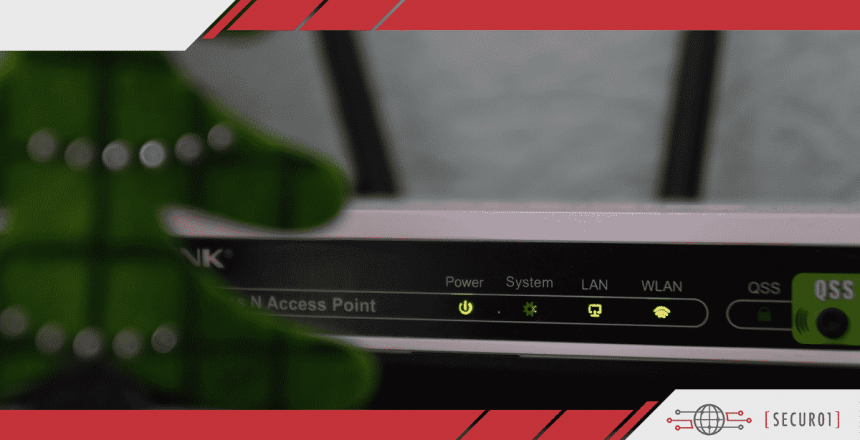If you run a business, you probably rely on the internet every day; however, there are a few Wi-Fi threats that you need to know about as well. The internet is a powerful tool. It allows you to access nearly anything you need from anywhere in the world as long as you have a connection. The internet has made businesses more efficient, allowing them to communicate with other countries quickly while also hiring remote employees. Without a doubt, the internet has made files more accessible than ever before.
At the same time, it is this very accessibility that makes businesses more vulnerable. If you can access the company from anywhere in the world, so can someone else. Therefore, this has led to the rise of new Wi-Fi threats that you need to keep in mind. Knowledge is power, and if you can spot these major Wi-Fi threats ahead of time, you will be able to keep yourself, your company, and your coworkers safe from harm.
A Rogue Access Point
The first of the significant Wi-Fi threats is called a rogue access point. This is a wireless access point that has been installed on the secure network. This is an access point that has not been authorized by the local network administrator. This means that this could be an access point that has been installed by a malicious person, threatening the network of the company.
If an attacker has installed a new access point on the network, they can run their vulnerability scanners. This is something that usually has to be done inside the organization. This means that they can attack adjacently using this rogue access point, placing the entire company in harm’s way.
To prevent these rogue access points, organizations must use tools that are called wireless intrusion prevention systems. These are tools that monitor the radio spectrum, looking for any rogue access points that might have been installed without the permission of the network administrator. This is a critical step in making sure the company is kept safe from harm.
An Evil Twin Access Point
Another major Wi-Fi threat is called an evil twin access point. If there is an evil twin access point, this is an access point that has been expressly set up to lure people into connecting to it. People might think that they are connecting to their traditional network; however, in reality, they are connecting to an evil twin access point. Then, once someone connects to an evil twin access point, the person running this access point can spy on traffic.
Using an evil twin access point, someone can collect a lot of data on the private company. Then, they can use this data to harm the company and its employees. Besides, an evil twin access point can be used to steal data that might not otherwise be accessible. If you can connect to an access point, the access point might also have access to your computer. This places you in harm’s way.
Furthermore, an evil twin access point can even be used to upload malware to the network. This can lock up the network, corrupt files, and steal information. Therefore, people need to e aware of the threat of an evil twin access point. This is one of the biggest Wi-Fi threats today.
A Neighboring Access Point
While this might not be a malicious threat, it is still possible that a neighbouring access point could lead to some issues. There may be other SSIDs in the range of the first network. Therefore, while trying to connect to the right access point while still in the scope of the neighbouring access point, it is possible that someone could pick up a virus or malware by connecting to a neighbouring SSID on accident.
Numerous viruses could be picked up this way. If someone connects to the wrong SSID by mistake, they could end up with a worm virus, a trojan horse, or even ransomware. Ransomware is one of the most dangerous infections out there today. If someone ends up with ransomware on their computer, this could lock up their equipment until the ransom is paid. Also, this type of virus could spread to other computers on the network, placing them in harm’s way as well. Therefore, people need to be aware of neighbouring access points and make sure they do not connect to them by mistake.
A Rogue Client
Another major threat in today’s world is called a rogue client. The definition of a rogue client is that this is a client who is attempting to connect directly to the network without going through an access point. An access point is supposed to filter who can connect to the network and who cannot. This is how a company stays safe from harm. Besides, a rogue client is anyone who connects to the network by using a rogue access point, as was detailed above. The reason why someone (or something) is labelled as a rogue client is that they are trying to connect without going through the proper security measures as detailed by the IT department. Finally, any client that has violated the network’s policies is also labelled as a rogue client.
It is crucial to make sure that the access point has been set up to be able to detect a rogue client. The information that is taken from the client needs to be passed to the controlled and the network director. When this information is passed through these layers, the access point should be able to generate some fault. Some of the signs that there might be a rogue client are that the client sends multiple frames that have prolonged durations. These should be measured by the network and trigger alarms, allowing the information to be passed upstream quickly. Also, if the client is trying to probe for any SSID, this is another sign that there is a rogue client. Any other client shouldn’t have to probe in this manner, which is a red flag that he or she is probably a rogue.
An Ad Hoc Network
Finally, an ad hoc network is another major security threat. For those who might not know, an ad hoc network is a network that is generated peer to peer. This is a network that is made between several computers and does not have an access point between them. This means that an ad hoc network usually does not have a lot of protection.
There is a significant security hole in the ad hoc network in that the ad hoc network provides a bridge to other networks. In the corporate world, this is a big deal because the default settings on most computers are only not going to offer the same level of connection as a typical network. Therefore, someone who is using an ad hoc network might not even realize that their network is unsecured. This can expose the company to significant harm and should be closed quickly. Instead of using an ad hoc network, make sure that everyone on the network goes through a reliable access point.
Rely on the Professionals at Secur01
These are only a few of the biggest threats that exist on the internet today. Everyone needs to be prepared. That is where we can help. At Secur01, we are a growing cybersecurity firm that knows how to spot these red flags and keep our clients safe. We would be happy to do the same for you as well. Contact us today to learn more about how we can help you! We can protect you against these threats and others!





